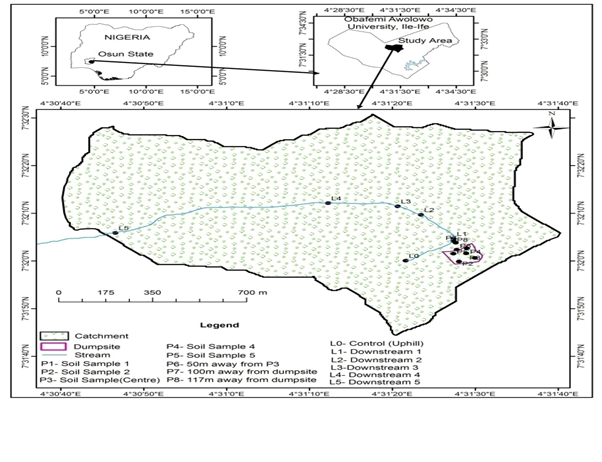Health Risk Assessment of Heavy Metals in Sediment of Tropical Freshwater Stream
Keywords:
Contamination, Toxicology, Pollution, Public health, Asunle streamAbstract
An investigation of the heavy metals in the bed sediment of Asunle stream was carried out to assess how seriously the sediment is polluted using Inductively Coupled Plasma Optical Emission Spectroscopy (ICP-OES). The potential health risk assessment was calculated for a lifetime exposure (ingestion) based on the United State Environmental Protection Agency (USEPA) models to determine the carcinogenic and noncarcinogenic risks for children and adults. The range of values (mg/kg) of heavy metals in bed sediment were: Fe (2850 – 7260), Mn (58 – 209), Co (0.7 – 33), Ti (21.6 – 67), Ba (1.61 – 9.81), Zn (7.5 – 79), Cu (5.6 – 25), As (8 – 137), Al (273 – 2160), Y (24 – 49), and Sr (0.10 – 5.3). As and Sr, values were below the background values for typical soil. The health risk assessment of heavy metals in the bed sediments revealed that carcinogenic risk was almost insignificant while the non-carcinogenic risk was significant since their values were above the recommended minimal risk level. The results also revealed that children are more vulnerable to hazards than adults. The chronic hazard quotient index for exposure to these metals through ingestion exceeded the acceptable USEPA value of 1.0.

Published
How to Cite
Issue
Section
Copyright (c) 2023 Godwin O. Olutona

This work is licensed under a Creative Commons Attribution 4.0 International License.




